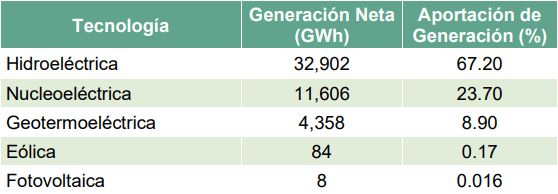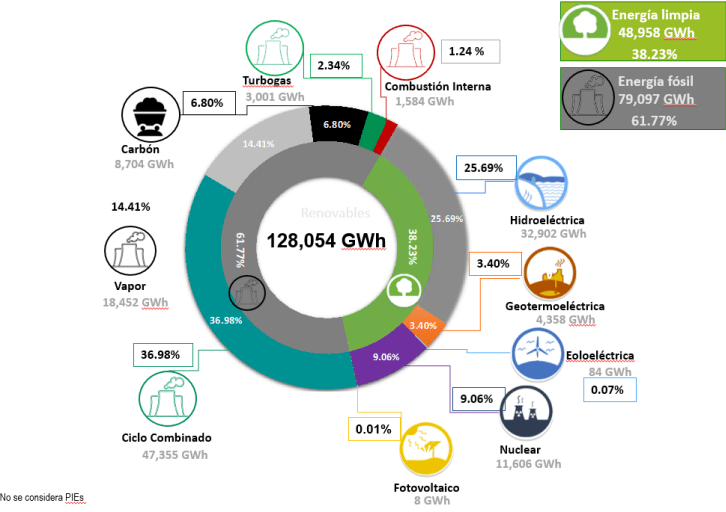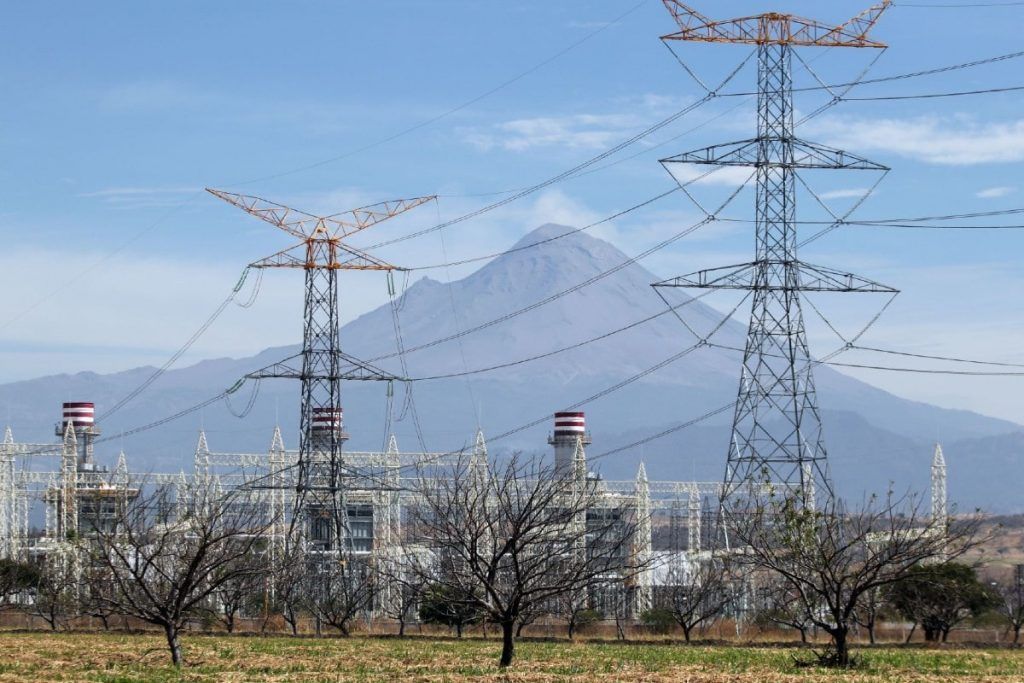The net generation of Mexico‘s Federal Electricity Commission (CFE) in 2021 with clean energy was 48,958 GWh, according to data from the CFE itself.
The largest participant in this scenario was generation with Hydroelectric energy with 67.2%, followed by nucleoelectric with 23.7%, and the remaining 9.1% with geothermoelectric, wind and photovoltaic technologies.

This participation shows the strength of the hydroelectric system, which contributes significantly and in a short time, responding to the needs of both power and voltage regulation resources (synchronous condenser).
Even with strong impacts on generation, such as the sanitary contingency and the entry of new generators, hydroelectric generation was the main contributor to the system.
In 2021, 38.23% of the generation was based on clean energies considering the participation of the CFE EPS’s Generation I, II, III, IV, VI and CNLV.
Below are the percentages of contribution of clean energies in net generation by process:

CFE
The company retains exclusive operation of the electricity transmission (and distribution) network and, as such, of electricity imports and exports. Electricity transmission (and distribution) tariffs are regulated.
The generation of electricity in nuclear plants and the transmission and distribution of electricity are activities reserved to the State for which the CFE has exclusivity.
However, the CFE may award contracts to private companies to build, expand and maintain the infrastructure. These contracts are awarded through competitive bidding and are subject to a national content requirement.
The private sector and the CFE participate in the generation and commercialization (supply) of electricity. To generate and commercialize electricity, a permit from the Energy Regulatory Commission (CRE) is required.
However, the CFE is the only entity that has permission to commercialize electricity for basic users.
Structure
The Electricity Industry Law prohibits vertical and horizontal integration; this provision applies to both CFE and private companies in the sector.
In 2016, CFE’s activities were separated, creating several subsidiaries (6 for generation, 1 for transmission, 1 for distribution and 2 for supply).
In 2019, the provisions regarding the restructuring of CFE’s activities were modified to reduce costs and improve management.
While the objective of this change is to create a more efficient system, it also opens the possibility for CFE activities to be reintegrated, thus re-strengthening its position in the sector.

